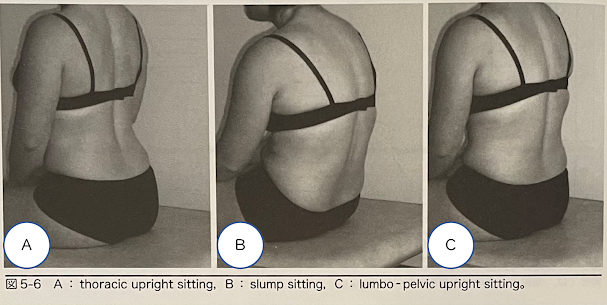November 12, 2022

Although there is no strict definition of “a good sitting posture”, it is generally described as a posture that places minimal strain on the body.
Many people mistakenly believe that certain incorrect postures are actually good ones, so as a clinic specializing in low back pain, we would like to explain this matter in more detail, incorporating findings from previous research.
To support the body, both non-contractile tissues — such as intervertebral discs, joints, and ligaments — and muscles play important roles.
The intervertebral discs are structurally specialized to bear and distribute load. Therefore, when you sit, a significant amount of the load is placed directly on the discs.
Muscles, on the other hand, work to keep the load on the discs within an appropriate range and to counteract the force of gravity pushing the body downward. Depending on the region of the body involved, one of these systems may work more while the other works less.
The study referenced here examined muscle activity in 3 different sitting postures and reported distinct characteristics for each:
A: Sitting upright with the thoracic spine extended
• High activity in the thoracic portion of the erector spinae
• Low activity in the lumbar multifidus muscles
B: Relaxed, slumped sitting
• Very low activity in the trunk muscles
• High load on the intervertebral discs
C: Sitting with the pelvis actively tilted upright
• High activity in the lumbar multifidus muscles
Among these, the most spine-friendly posture is posture A.
In Posture A, the focus on drawing the chest/thoracic spine upward allows the work done by the thoracic erector spinae to minimize the activity required from the lower back muscles. This helps prevent muscle- and fascia-related low back pain.
Issues with Other Postures:
• Posture B places excessive load on the intervertebral discs. Maintaining this posture for long periods increases the risk of disc degeneration.
• Posture C overuses the lumbar muscles, which may lead to muscle- and fascia-based low back pain.
To assume Posture A, try to sit with the image of your head gently reaching toward the ceiling while ensuring your lower back does not over-arch (hyper-extension).
ILC International Lumbago Clinic Tokyo



